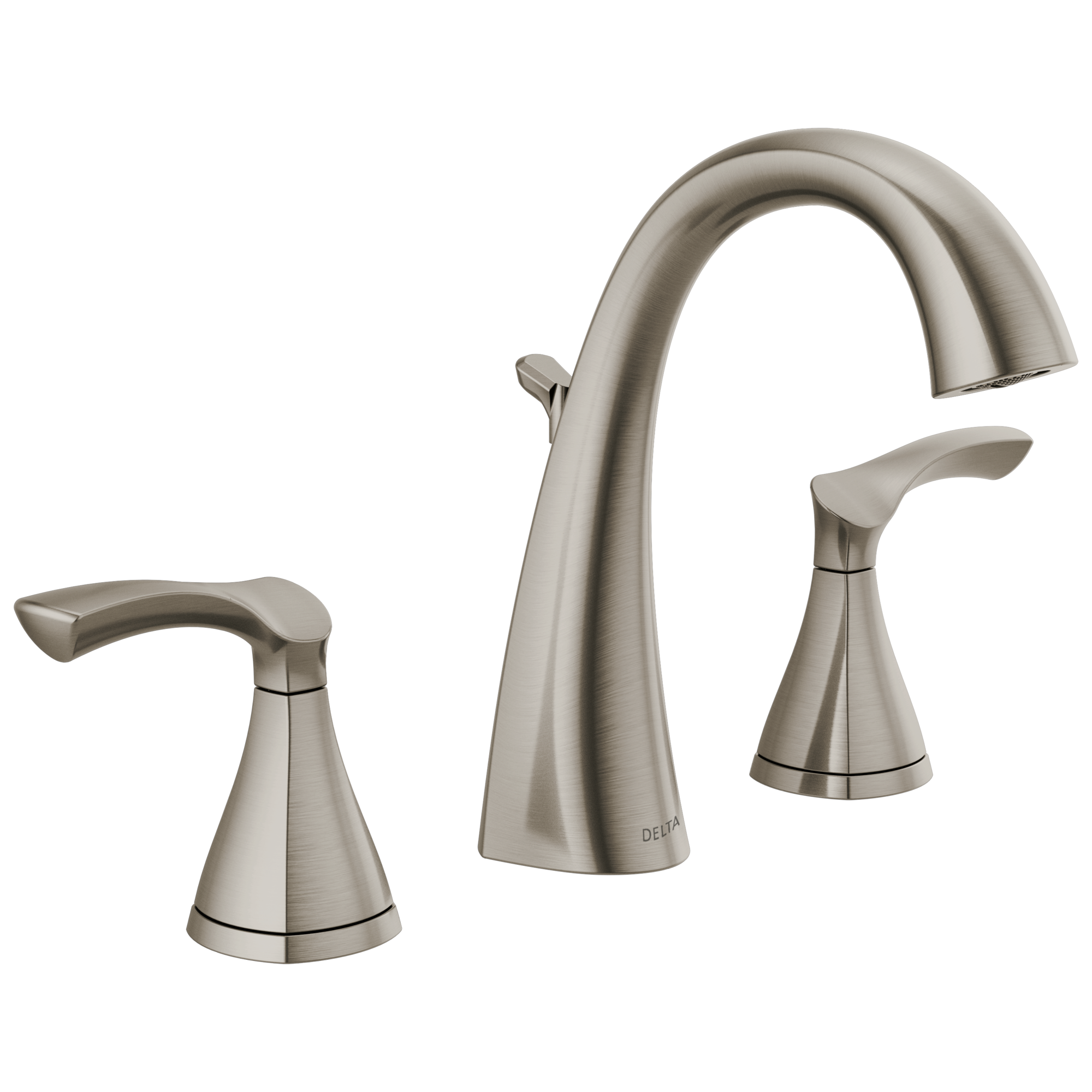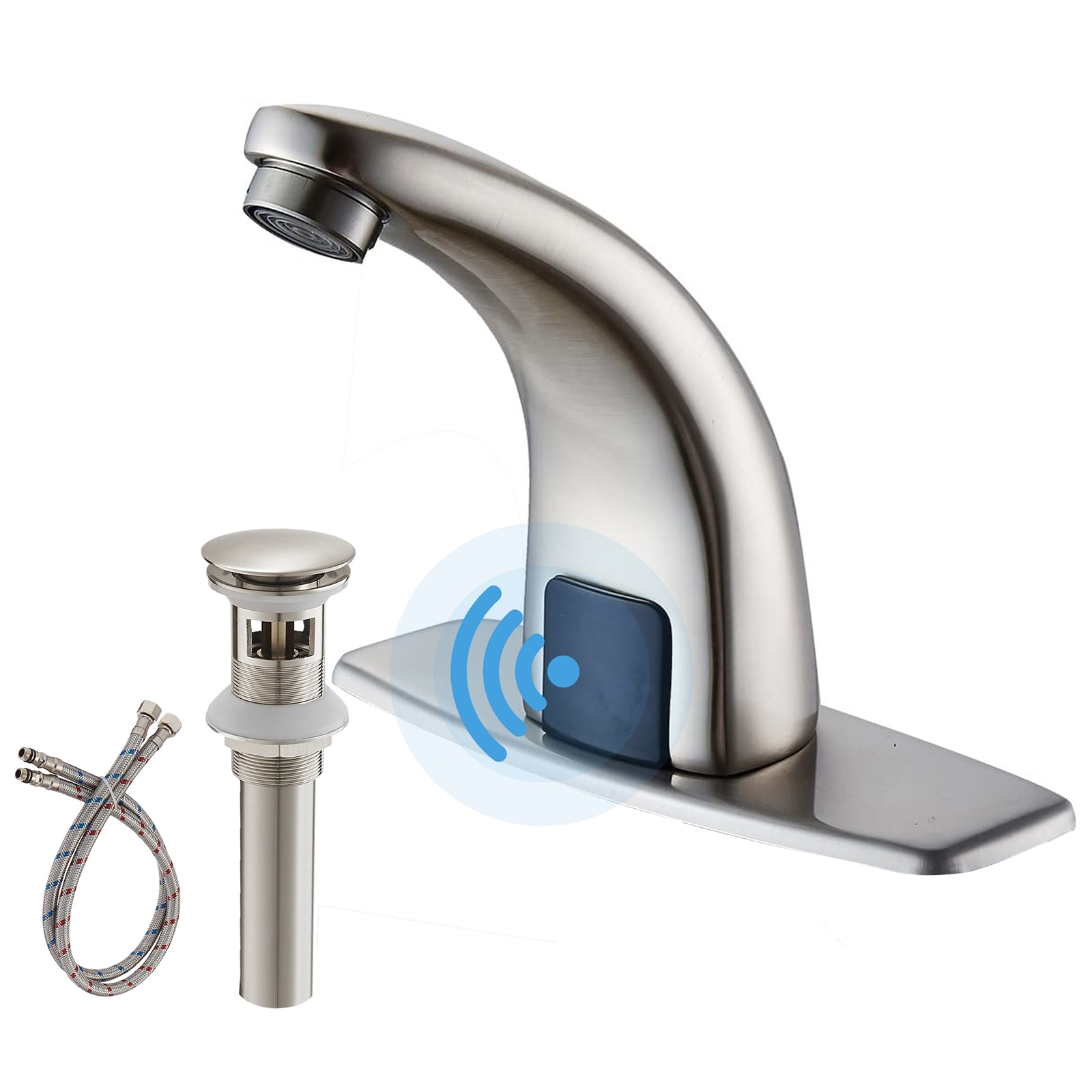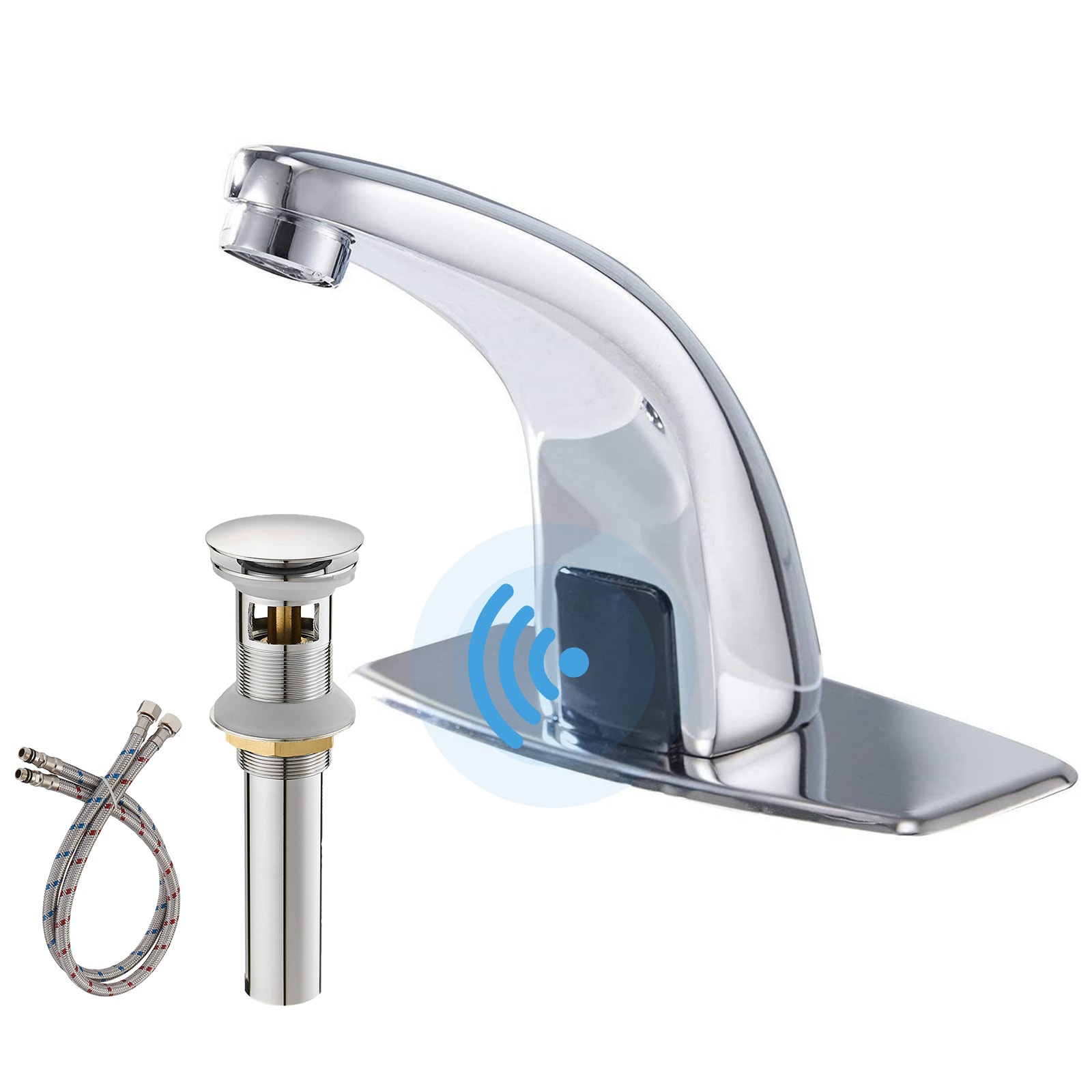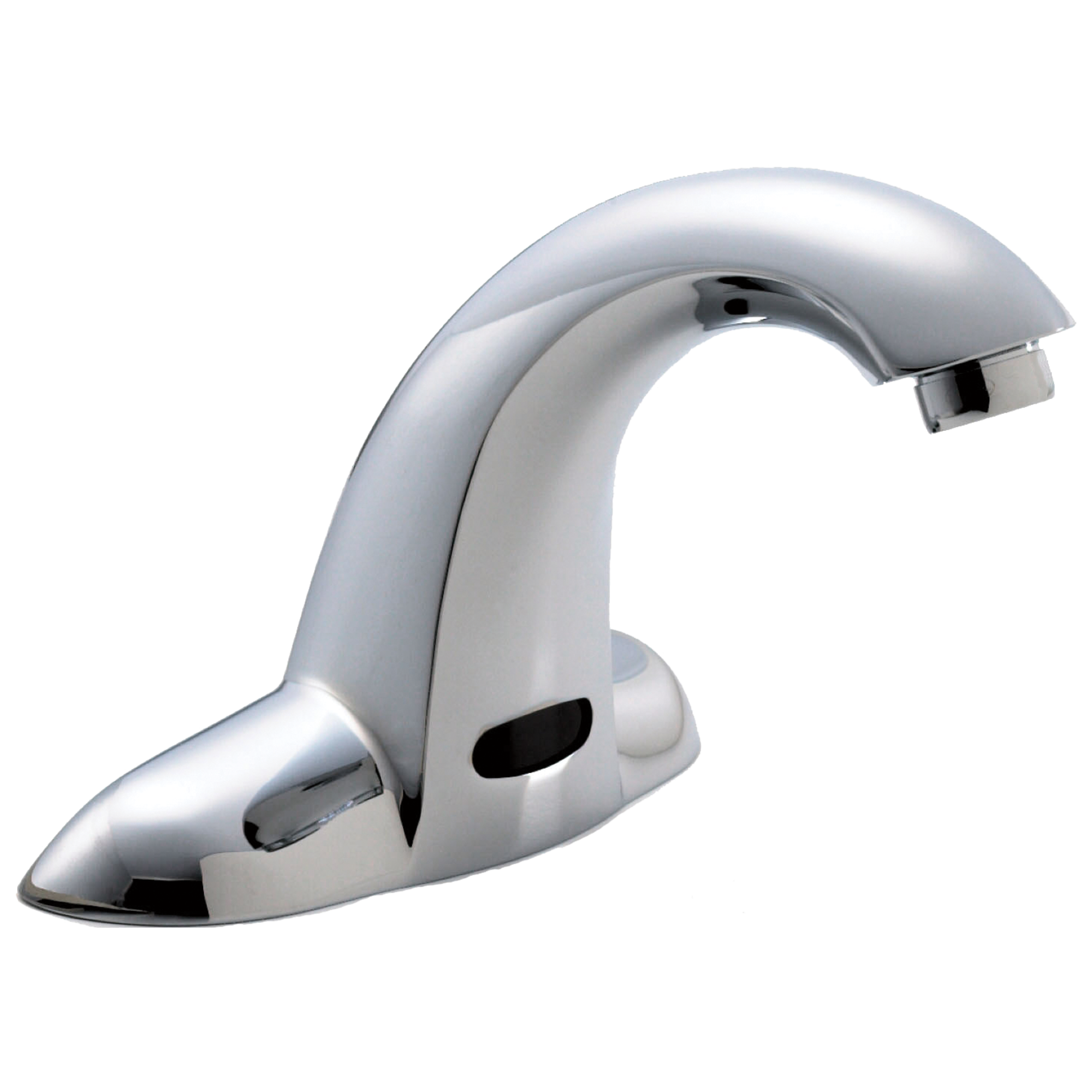Touchless Bathroom Faucet Basics

Touchless bathroom faucets have become increasingly popular in recent years, offering a blend of hygiene, convenience, and modern design. These faucets, unlike their traditional lever-style counterparts, activate automatically when they detect a hand or object in their proximity. This hands-free operation provides numerous advantages, particularly in high-traffic areas like bathrooms, kitchens, and public restrooms.
Benefits of Touchless Bathroom Faucets
Touchless faucets provide several advantages over traditional lever-style faucets. These benefits are particularly relevant in areas where hygiene and convenience are paramount.
- Improved Hygiene: Touchless faucets eliminate the need for direct hand contact with the faucet, reducing the spread of germs and bacteria. This is especially important in public restrooms and areas where multiple people use the faucet frequently.
- Enhanced Convenience: The hands-free operation of touchless faucets makes them incredibly convenient. They are particularly beneficial for individuals with limited hand mobility, such as seniors or those with disabilities.
- Water Conservation: Some touchless faucets are equipped with features that automatically shut off the water flow after a predetermined time, reducing water waste.
Comparison of Touchless and Traditional Faucets
Touchless faucets differ from traditional lever-style faucets in their operation and features.
- Activation Mechanism: Touchless faucets rely on sensors to detect movement, while traditional faucets require manual operation using a lever.
- Hygiene: Touchless faucets offer superior hygiene due to their hands-free operation, reducing the risk of germ transmission.
- Convenience: Touchless faucets provide greater convenience, especially for individuals with mobility limitations.
- Cost: Touchless faucets generally have a higher initial cost compared to traditional faucets.
Touchless Activation Mechanisms
Touchless faucets employ different sensor technologies to activate the water flow.
- Infrared Sensors: These sensors detect the infrared radiation emitted by objects, including hands, and activate the water flow. Infrared sensors are known for their reliability and accuracy, even in low-light conditions.
- Motion Sensors: Motion sensors detect movement using a combination of technologies, including ultrasound or Doppler radar. These sensors are particularly effective in detecting large movements, making them suitable for high-traffic areas.
Lowe’s Touchless Faucet Selection: Touchless Bathroom Faucet Lowe’s

Lowe’s offers a wide range of touchless bathroom faucets, catering to diverse needs and budgets. These faucets offer convenience, hygiene, and a modern touch to your bathroom.
Touchless Faucet Models at Lowe’s
Lowe’s carries a variety of touchless bathroom faucets from popular brands, each with its own unique features and price points. Here’s a breakdown of some popular models:
| Model | Brand | Features | Price |
|---|---|---|---|
| Delta Trinsic Touchless Bathroom Faucet | Delta | Touchless operation, Diamond Seal Technology, MagnaTite Docking, TempSense Technology | $250 – $350 |
| Moen Align Touchless Bathroom Faucet | Moen | Touchless operation, Duralock Quick-Connect, Spot Resist Finish, LifeShine Finish | $200 – $300 |
| Kohler Artifacts Touchless Bathroom Faucet | Kohler | Touchless operation, Kohler finishes, lifetime limited warranty | $300 – $400 |
| American Standard Cadet Touchless Bathroom Faucet | American Standard | Touchless operation, easy to install, multiple finishes | $150 – $250 |
Customer Reviews and Ratings
Customer reviews provide valuable insights into the performance and reliability of touchless faucets. Here are some insights based on reviews from Lowe’s website:
- Delta Trinsic Touchless Bathroom Faucet: Generally receives high ratings for its sleek design, reliable touchless operation, and easy installation. Customers appreciate the Diamond Seal Technology for its durability and leak-proof performance.
- Moen Align Touchless Bathroom Faucet: Praised for its modern design, smooth touchless operation, and user-friendly features. Customers appreciate the Duralock Quick-Connect for easy installation and the Spot Resist Finish for its stain resistance.
- Kohler Artifacts Touchless Bathroom Faucet: Highly regarded for its elegant design, high-quality construction, and durability. Customers appreciate the Kohler finishes for their longevity and the lifetime limited warranty for peace of mind.
- American Standard Cadet Touchless Bathroom Faucet: Known for its affordability, reliable operation, and easy installation. Customers appreciate the multiple finishes available and the overall value for the price.
Design Considerations

Choosing the right touchless bathroom faucet involves more than just functionality. It’s also about how it complements your bathroom’s aesthetic and design.
Touchless bathroom faucet lowe’s – The style and finish of your touchless faucet play a crucial role in determining how it blends with the rest of your bathroom decor. From sleek and modern to classic and traditional, there’s a wide range of styles available to suit your preferences.
Available Styles and Finishes
Touchless faucets come in a variety of styles and finishes, offering a wide range of options to complement any bathroom design. Here’s a breakdown of popular choices:
- Modern: These faucets typically feature clean lines, geometric shapes, and minimalist designs. Popular finishes include brushed nickel, chrome, and matte black.
- Contemporary: Contemporary faucets often have a similar aesthetic to modern styles, but with a focus on unique and innovative designs. They can feature unusual shapes, bold colors, or integrated features like LED lighting.
- Traditional: These faucets evoke a classic and timeless feel, often featuring ornate details, curves, and traditional finishes like polished brass or oil-rubbed bronze.
- Transitional: Transitional faucets bridge the gap between modern and traditional styles. They offer a blend of clean lines and subtle embellishments, making them suitable for a wide range of bathroom designs.
Finishes are equally important, as they determine the overall look and feel of your faucet. Popular options include:
- Chrome: A classic and versatile finish that reflects light well, creating a bright and polished look.
- Brushed Nickel: A more contemporary finish that provides a subtle, textured look.
- Matte Black: A bold and modern finish that adds a touch of sophistication.
- Oil-Rubbed Bronze: A warm and traditional finish that creates a rustic and elegant feel.
Aesthetic Enhancement
Touchless faucets can significantly enhance the overall aesthetic of your bathroom. Here’s how:
- Sleek and Modern Look: Touchless faucets are known for their sleek and modern design, adding a contemporary touch to any bathroom.
- Clean and Minimalist: The absence of handles contributes to a clean and minimalist aesthetic, creating a sense of space and order.
- Hygienic Appeal: The touchless feature adds to the overall hygienic appeal of your bathroom, as it reduces the spread of germs and bacteria.
- Increased Functionality: Touchless faucets offer convenience and ease of use, making them a practical and aesthetically pleasing addition to any bathroom.
Bathroom Layout Considerations
Incorporating a touchless faucet into your bathroom design requires careful consideration of the layout, sink size, and countertop material. Here’s how to approach this:
- Sink Size: Ensure that the sink is large enough to accommodate the faucet and provide adequate space for hand washing. A larger sink might be necessary for a touchless faucet to ensure comfortable use.
- Countertop Material: Consider the material of your countertop and how it will complement the finish of the faucet. For example, a brushed nickel faucet might look best with a granite or quartz countertop.
- Faucet Placement: Ensure the faucet is placed at a comfortable height and distance from the sink to allow for easy use. It should be positioned centrally and within reach of the user.
Touchless Faucet Technology

Touchless bathroom faucets are a modern marvel, bringing convenience and hygiene to your bathroom. But what exactly makes them work? Let’s delve into the fascinating technology behind these hands-free marvels.
At the heart of every touchless faucet lies a sensor. These sensors are typically infrared (IR) or ultrasonic. Infrared sensors emit invisible infrared light, which reflects back to the sensor when it encounters an object. The sensor then uses the time it takes for the light to return to determine the distance of the object, activating the water flow when your hand is close enough. Ultrasonic sensors work by emitting high-frequency sound waves and measuring the time it takes for the sound to bounce back from an object. This technology can detect movement, even through a thin barrier like soap.
Sensor Operation
The sensor technology in touchless faucets plays a crucial role in their operation. These sensors detect movement or presence, triggering the water flow. The specific technology used in a touchless faucet determines its sensitivity and range. Let’s look at how these sensors work:
- Infrared Sensors: These sensors emit infrared light, which is invisible to the human eye. When the light hits an object, it reflects back to the sensor. The sensor then measures the time it takes for the light to return, which indicates the distance of the object. If the object is close enough, the sensor triggers the water flow.
- Ultrasonic Sensors: Ultrasonic sensors work by emitting high-frequency sound waves. These sound waves travel through the air and bounce back when they encounter an object. The sensor measures the time it takes for the sound waves to return, which indicates the distance of the object. If the object is close enough, the sensor triggers the water flow.
Energy Efficiency
Touchless faucets are often praised for their energy efficiency. The technology behind them allows for precise water control, minimizing water waste compared to traditional faucets. Let’s examine how these faucets contribute to energy savings:
- Reduced Water Consumption: Touchless faucets only dispense water when needed, preventing unnecessary water usage. This is particularly beneficial in busy areas like public restrooms, where people might forget to turn off the faucet.
- Automatic Shut-off: Once the sensor detects that your hands are no longer in range, the water flow automatically stops. This eliminates the need for manual shut-off, reducing the chances of water running needlessly.
Drawbacks and Limitations, Touchless bathroom faucet lowe’s
While touchless faucets offer numerous advantages, it’s essential to consider their potential drawbacks and limitations. Here are some points to keep in mind:
- Sensitivity Issues: Touchless faucets can sometimes be overly sensitive, triggering the water flow when there is no actual hand movement. This can lead to unnecessary water usage and frustration. Some faucets offer adjustable sensitivity settings to address this issue.
- Interference: The sensors in touchless faucets can be affected by external factors like direct sunlight, heat, or vibrations. This can disrupt their operation and lead to unreliable water flow.
- Maintenance Requirements: Touchless faucets require regular cleaning and maintenance to ensure proper sensor function. Dust, debris, and hard water buildup can interfere with the sensors’ ability to detect movement.
